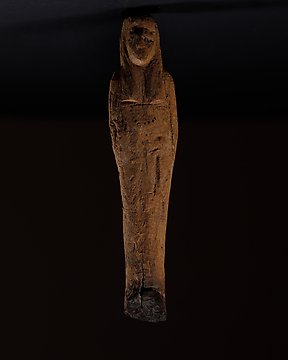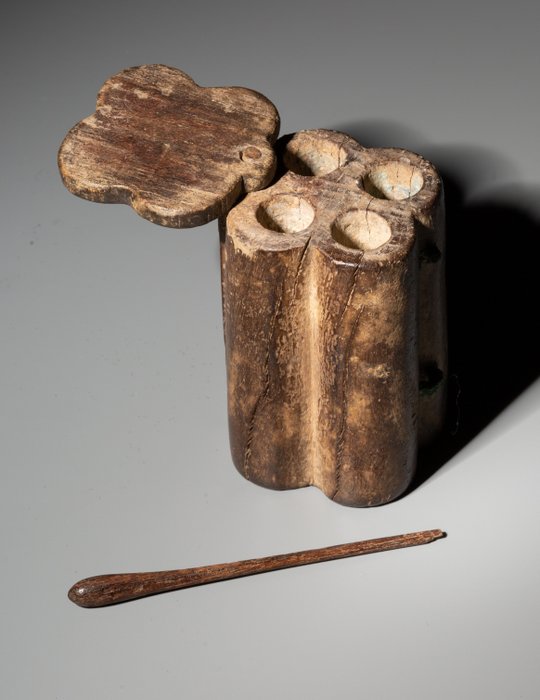
古埃及 木 烏沙卜蒂 - 18 cm
編號 83849935

編號 83849935

- PUBLISHED AND EXHIBITED -
EX. MEIJER COLLECTION.
Kohl jar quadruple vase.
Case formed by four tubes joined together on a square plan; in back, the two tubes are joined by a reinforcing projection
at the top of which is drilled a hole for the pivot of the lid. At the front, two bronze rings allow the stylus housing, also ensuring closure.
Ancient Egypt, New Kingdom, 1550 - 1070 BC
Material: Wood and cooper/bronze.
Size: 7 cm H.
Provenance: Ex. Anubis Ancient Art, Rotterdam, Netherlands. Ex. Collection W. Arnold Meijer, Netherlands. Before 1983. Ex. Old collection A. Karawani, London, 1960 - 1970.
Exhibition: Musée Allard Pierson, Amsterdam University Archaeological Museum, November 17, 2006 - March 25, 2007.
Publication: Carol A. R. Andrews & Jacobus van Dijk, Objects for Eternity, Egyptian Antiquities from the W. Arnold Meijer Collection, eds., Mayence, 2006, pp. 118-119, n° 2.27 c, illus.
Condition: Intact.
DESCRIPTION
Cosmetics and other toiletries were highly valued by the ancient Egyptians. Both men and women wore eye makeup, which served to protect the eyes from the bright sun and from blowing sand and dust. Pigment was made either from green malachite (a type of copper ore) or from grayish black galena (lead ore) and was kept in a powdered form generically known as kohl. Perfumed unguents, made from oils or fats scented with flowers, herbs, spices, and resins, were prized for their rare ingredients and were used both in the daily cosmetic regimen of wealthy Egyptians and as funerary offerings to anoint the bodies of the dead.
Kohl was stored in specially made containers, frequently carved from hard stones and featuring a squat body, flat lip and rim, and a neck opening just wide enough for the insertion of a finger or kohl stick. The delicate little kohl jar seen here is clearly a luxury item, made of highly polished black obsidian, a form of volcanic glass. The rim is covered in gold leaf, and it is likely that the cover (now missing) would originally have been rimmed with gold as well.
Notes:
The seller guarantees that he acquired this piece according to all national and international laws related to the ownership of cultural property. Provenance statement seen by Catawiki.
The seller will take care that any necessary permits, like an export license will be arranged, he will inform the buyer about the status of it if this takes more than a few days.
According to Spanish legislation, items sent outside the European Union are subject to export taxes and will be added to the invoice, at the buyer's expense. These export fees are fixed on the final auction price and the tax rate is not applied directly on the total value of the item to be exported, but rather the different percentages by sections are applied to it:
- Up to 6,000 euros: 5%.
- From 6.001 to 60.000 euros: 10%.
This export permit application process can take between 1 months maximum.